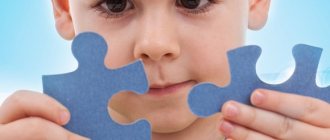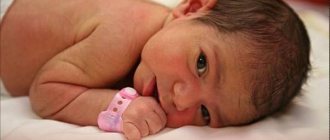What it is
What does a diagnosis of REP mean? The meaning of this abbreviation is residual encephalopathy. The disease is characterized by the death of neurons and impaired brain function. The word "residual" means "residual."
This pathology is always secondary. It occurs as a residual phenomenon after suffering diseases of the central nervous system. This complication occurs when brain diseases are insufficiently or incorrectly treated.
Parents of children are often interested in what a diagnosis of REP in a child means. The decoding of this medical abbreviation is similar, it is residual encephalopathy. With adverse effects on the embryo or birth injuries, perinatal encephalopathy occurs. This disease is diagnosed in children in the first weeks and months of life. If the treatment of such a pathology was carried out poorly, then REP may develop in the future as a residual phenomenon. Often this complication does not appear immediately, but after several months or even years, and it can be difficult to diagnose.
Features of children diagnosed with residual encephalopathy of the brain. Recommendations for teachers.
Features of children diagnosed with residual encephalopathy of the brain.
Residual encephalopathy (hereinafter referred to as REP) of the brain is a pathology that develops due to the death of cells in the human central nervous system due to exposure to various damaging factors.
With REP, children suffer from chronic energy deficiency. The work cycles of their brain are reduced to 5-15 minutes, and relaxation pauses increase to 3-5 minutes or more. During periods of relaxation, the child’s “external” activity is not interrupted, but occurs automatically and is not consciously realized. At this time, the child does not perceive what is being said to him, although he seems to be listening attentively. If in a state of “relaxation” the child continues to write (as this usually happens in Russian language lessons), then the result of his work qualifies as dysgraphia, since it turns out to be impossible to read what is written.
During relaxation breaks, children can continue to communicate and talk, but are unable to remember their statements. They can say something rude and be completely confident that they didn’t say anything like that. A child can take a pen from a neighbor’s table, put it in his pocket and not know that it is there. He may push or hit someone and not remember it. Listening to accusations against them, children with REP quite sincerely swear that they did not speak, did not take, did not push, and this causes even greater indignation among others. Since there are many witnesses to their misdeeds, they are often considered blatant liars, hooligans and thieves. Children, on the contrary, come to the conclusion that those around them are unfair to them; it begins to seem to them that the whole world has turned against them.
Problems of self-government arise in a child with REP not only during periods of brain relaxation, but also when performing any activity in the working phase. The child acts immediately, impulsively and thoughtlessly. Therefore, the results of his actions are completely unexpected for him. The student first acts and only then understands what he has done. He tries to improve, but cannot keep his promises.
At a time when the brain “turns off” and “rests,” the child ceases to understand, comprehend and consciously process incoming information. It is not fixed anywhere and does not linger, so the child does not remember what he was doing at that time, does not notice, does not realize that there were any breaks in his work.
During a 40-minute lesson, he can “switch off” several times and let out a lot from the teacher’s story without noticing it. As a result, he either ceases to understand what is being discussed in the lesson, or in his head all this fragmentary information is randomly and uniquely combined, added together, which is what he takes away from the lesson. Often teachers and parents are puzzled by the absolutely incomprehensible, “wild” mistakes of children and are unable to find any reasonable explanation for them.
Recommendations for teachers teaching children diagnosed with REP of the brain:
- During the learning process, it is necessary to free children from any secondary, auxiliary, non-essential, design work
. Adults can mark the margins in the child’s notebook themselves and mark with a dot the place where they should start writing. It happens that a child diligently counts the cells that need to be moved from above and to the left, and in this search, making mistakes many times, he becomes so tired from the tension that, having finally found the place from which to write, he can no longer work at all.
- Both general principles and specific methods proposed by Glen Doman are extremely effective. His approach is based on clear structuring of the information that the child has to learn, dividing it into specific figurative units, with their subsequent organization into integral systems
according to the laws that apply in the relevant field of knowledge. The unit of information must necessarily be a holistic, independent “image-fact” that is understandable to the child, can be comprehended by him and can be easily included in the system of his personal experience.
- The systematic presentation of information creates a systematically organized memory, facilitates the search for necessary information, and develops thinking. This means that the load on attention and systematization of material when memorizing is significantly reduced. The form of information presentation should also be algorithmic and clear. Conciseness of wording, design, and illustrations must be observed, which should not contain anything superfluous, insignificant, or distracting.
- Avoid situations that cause negative emotions. Negative emotions that arise when a child is unable to remember what is required force him to avoid “learning” situations. He no longer wants to listen or watch, so that later he does not have to suffer when answering questions. By requiring the exact reproduction of all information, we put the child in a situation of failure in advance and thereby destroy learning motivation. Naturally, strong negative emotions reduce the ability to learn in any person, especially in a child with RAD of the brain. Therefore, it is naive to expect that he will perceive or understand anything better after he has been thoroughly scolded.
- The classroom environment should be free and relaxed. You cannot demand the impossible from children: self-control and discipline are extremely difficult for a child with EBD.
The child’s sincere attempts to maintain discipline (sit correctly, don’t fidget, don’t talk, etc.) and worries about the fact that this doesn’t work out lead even faster to overwork and loss of performance. When attention is not focused on discipline, and lessons are conducted in a playful way, children behave calmer and work more productively (The experience of play-based learning with special development of lessons is available at school No. 558 in St. Petersburg.)
When there are no prohibitions, there is no accumulation of unreacted energy with subsequent explosions. By allowing minor disciplinary violations, overall good performance can be maintained.
6. If the teacher sees that the child has “switched off” and is sitting with a vacant gaze, then at this moment there is no need to touch him: the child will still not be able to react rationally.
7. When conducting game lessons, you need to remember that strong and vivid emotional impressions can disorganize the activity of a student diagnosed with REP of the brain.
Vivid emotions create something like hotbeds of excitement and can disrupt both subsequent activities and the results of previous ones.
Traditionally used methods of emotional inclusion in the lesson are also not suitable for children with REP of the brain.
. Usually, in order for children to tune in, at the very beginning of the lesson it is proposed to tell them something interesting, although it has little to do with its essence.
One of the obstacles in the learning and intellectual development of children with REP of the brain is a peculiar protective form of activity that develops quite quickly in them. It is expressed in the fact that children try to do at least something (no matter what), even if they do not understand what and how to do. It is as a result of such protective activity that some absurd information, operations, i.e., “information noise” gets stuck in the student’s memory, which further disorganizes their thinking and complicates their learning.
Psychological and pedagogical support for children with EBD shows that even without treatment, as they grow older, there is always some normalization of brain function. Even if attentiveness does not improve, the obvious “cyclicality” of intellectual activity is smoothed out, and “blackouts” occur less often. By the 5th-6th grade, children already feel the moment when “thoughts begin to run wild” and it becomes difficult to concentrate. They are distracted, rest and continue working when this condition passes. The total time during which they can study productively increases significantly.
Causes
The diagnosis of REP is usually made to patients if they show signs of brain disorders after suffering pathologies of the central nervous system and other diseases that adversely affect the state of neurons. Residual encephalopathy most often occurs due to the following diseases and conditions:
- Severe head injuries accompanied by concussion or skull fractures.
- Congenital perinatal encephalopathy. This condition develops after birth injuries and a pathological course of pregnancy in the mother of the child.
- Inflammatory diseases of the brain.
- Excess urea in the body. This deviation is often observed in diseases of the liver and kidneys.
- Stroke and other cerebrovascular accidents. The cause of the pathology can also be vascular atherosclerosis.
- Diabetes mellitus. Endocrine disorders and excess glucose in the body adversely affect the condition of the nervous tissue.
- Toxin poisoning. Heavy metal compounds, certain medications, and alcohol have an adverse effect on the brain.
- Use of narcotic and psychotropic drugs. Even with timely detoxification, patients often retain signs of brain pathology.
Often the causes of this type of encephalopathy are several unfavorable factors. The physician must take a thorough history of the patient before diagnosing REP. This disease can develop after a fairly long period of time after suffering pathologies.
Causes of ZPRR
ZPRD occurs due to organic damage to brain structures and various disorders of the nervous system. Factors provoking delayed psycho-speech development:
- genetic diseases associated with disorders of the subcortex of the brain;
- infectious diseases and lack of oxygen during pregnancy;
- problematic birth (trauma, umbilical cord entanglement, rapid or premature birth, hypoxia);
- metabolic disorders in the central nervous system;
- organic brain damage (fluid accumulation, high intracranial pressure, tumors);
- pathologies of the psychiatric spectrum, including epilepsy;
- severe infectious diseases at an early age.
In addition to organic reasons, psychological factors also play an important role. Mental trauma and improper upbringing (overprotection, abuse, insufficient care and attention) can lead to developmental delays or complete loss of speech (mutism, speech negativism).
Symptoms
Residual encephalopathy in an adult patient is accompanied by the following symptoms:
- Sudden memory loss. The patient becomes forgetful. He may have difficulty remembering even recent events.
- Decrease in intelligence. The patient's thinking process is disrupted due to the death of neurons and impaired cerebral circulation.
- Emotional lability. The patient's mood often changes, and there is increased irritability and tearfulness.
- Sleep disorders. Patients suffer from insomnia at night, and during the day they feel drowsiness and lethargy.
- Convulsive seizures. Seizures become more frequent as the disease progresses.
- Speech, vision and hearing disorders. The patient slurs his words. Vision and hearing deteriorate due to the death of nerve cells.
- Impaired coordination of movements. The patient's gait becomes unsteady, and he often loses his balance.
- Asthenia. The patient complains of constant fatigue and high fatigue.
- Headache. Migraine-like attacks occur. In this case, the pain syndrome is not relieved by analgesics.
These manifestations of pathology increase as the disease progresses. The more neurons die, the more severe the impairment of brain function.
What signs indicate a diagnosis of REP in a child? This disease can sometimes be difficult to identify in young children. After all, the baby cannot complain about feeling unwell. Parents should be alert to the following manifestations:
- tearfulness;
- increased reaction to external stimuli;
- frequent nausea and vomiting;
- weak sucking reflex;
- increased muscle tension;
- arrhythmia;
- exophthalmos (bulging eyes).
In older children, the disease is accompanied by the same symptoms as in adults. Residual encephalopathy has an extremely negative effect on the child’s intelligence. Children lag behind in mental and physical development, experience difficulties in assimilation and memorization of information, and it becomes difficult for them to study. Often, sick children experience sudden fainting.
Recommendations for parents of children with ADHD
Only a qualified doctor can diagnose, diagnose and prescribe competent treatment for attention deficit symptoms. But the child’s recovery largely depends on his parents. First of all, they must accept their baby and realize that his behavior is not the result of upbringing, but a consequence of the disease.
To eliminate ADHD symptoms, experts recommend adhering to the following behavioral strategies at home:
- Create a daily routine and strictly follow it. It is very important that your child sleeps enough time. A child who does not get enough sleep becomes more capricious, aggressive, and loses the ability to concentrate.
- Monitor the child's nutrition. Many researchers claim that ADHD symptoms depend on what is included in the baby's daily diet. Children suffering from attention deficit disorder are often deficient in omega-3 acids. Therefore, sea fish should be a mandatory part of the children's menu. You can give your child fish oil or multivitamin supplements containing magnesium and B vitamins. These micronutrients also reduce ADHD symptoms. In addition, it is necessary to exclude from the diet foods high in gluten (cereals), casein (milk) and polysaccharides. Carbohydrates should be supplied to the body from fruits and vegetables, and it is best to avoid eating sweets, potatoes, rice and flour dishes. The diet of a child with attention deficit disorder should include plenty of meat, eggs, legumes, nuts and cheese.
- Organize the space of the children's room in such a way that all the child's things have certain places. The baby will be less likely to lose them. Various sources describe ADHD symptoms, and one of the most persistent is called the inability to organize. This greatly complicates the process of social adaptation of the child. A clear organization of space will make life a little easier for the baby.
- During classes, all distractions should be eliminated. Be sure to turn off the TV, computer, radio, etc. A child who exhibits the core symptoms of ADHD has difficulty concentrating. Therefore, parents should make sure that nothing disturbs him.
- Give your child the right to choose. When he gets dressed, offer two sets of clothes, and during meals - several types of dishes. But the number of options should not be too large - otherwise it can lead to the development of emotional and sensory overload.
- When talking with your child, try to give precise instructions. All instructions must contain a minimum of information. It is necessary to refrain from persuasion and threats.
- Set realistic goals for your child so that he can cope with them. A child's success must be rewarded. Use visuals to display his achievements.
- Help your child find an activity in which he can achieve success. This will develop social communication skills and also improve your child's self-esteem.
Parents can help a child overcome the symptoms of ADHD; without their participation, even the best therapy will be ineffective. The best remedy for most psychological disorders in children is the love, support and understanding of the closest people - mom and dad!
Complications
How dangerous is a neurologist's diagnosis of REP? Without treatment, this type of encephalopathy can lead to the development of the following complications:
- severe dementia in adult patients;
- mental retardation in children;
- dropsy of the brain;
- neurocirculatory dystonia;
- paralysis;
- Parkinson's disease;
- epilepsy.
The likelihood of complications increases if the patient seeks help too late, when a significant number of nerve cells have died.
Pediatric neurologists often talk about minimal brain dysfunction when diagnosing REP. What does this mean? This complication is expressed in mental disorders in young patients. The child becomes restless, hyperactive, excitable, and often makes erratic movements. These manifestations intensify during puberty against the background of hormonal changes in the body.
Types of ADHD
Highly qualified specialists practice an individual approach to the treatment of the syndrome. This is due, first of all, to the fact that for successful recovery it is necessary to eliminate the causes of the pathology. To date, several types of this disorder have been identified, requiring different approaches to therapy:
- the classic form is associated with disturbances in the functioning of the frontal lobe cortex. In this case, classic ADHD symptoms will appear, such as instability of attention, absent-mindedness, disorientation, etc. To achieve lasting results, drug therapy can be used to increase dopamine levels in the brain. Patients are advised to reduce their intake of simple carbohydrates and introduce high-protein foods into their diet;
- inattentive type. The core symptoms of ADHD will be complemented by a tendency to become self-obsessed, lack of energy, detachment and lack of motivation. This type of disorder is usually diagnosed at an older age and is more common in girls. The development of the inattentive type of ADHD is caused by a decrease in brain activity in the cerebellum and frontal cortex;
- attention deficit disorder with excessive fixation. Classic ADHD symptoms in this case are combined with a tendency to dwell on negative thoughts and obsessive behavior. Patients with this type of disease are overly touchy and restless, often argue and go against their mentors;
- If there is a disorder in the temporal lobes of ADHD, symptoms will include increased temperament. The patient may experience a feeling of anxiety, headaches and discomfort in the abdominal area. Characterized by the appearance of gloomy thoughts, memory problems, difficulties in reading texts, as well as incorrect interpretation of comments addressed to the patient;
- limbic type. Primary ADHD symptoms are accompanied by melancholy, a desire to isolate oneself from others, low self-esteem, sleep disorders and lack of appetite. Stimulants should not be used to treat this type of syndrome, as they can lead to the development of depression.
Also, the main symptoms of the disorder may be accompanied by outbursts of anger and moodiness, a desire to always be in opposition and increased talkativeness, hypersensitivity to loud sounds and bright lights, as well as hasty thinking.
Diagnostics
Before diagnosing REP, the doctor questions the patient and examines his medical record. It is necessary to identify all neurological pathologies that the patient suffered in the past. Additional research methods are also prescribed:
- electroencephalogram;
- MRI and CT of the brain;
- clinical and biochemical blood test;
- Dopplerography of cerebral vessels.
Causes
Various factors and diseases can provoke disruption of the functioning of neurons and their death. Here are the main ones:
- Traumatic brain injuries (open and closed).
- Neuroinfections.
- Neurotoxins.
- Intoxications affecting the entire body (alcohol, heavy metal salts, chemical reagents).
- Ionizing radiation.
- Drugs and psychoactive substances.
- Inflammatory diseases.
- Concomitant pathology (diseases of the cardiovascular, endocrine, genitourinary systems, chronic liver pathology).
- Atherosclerosis of cerebral vessels, ischemic stroke.
- Pathological pregnancy and childbirth.
- Brain swelling.
Complications during pregnancy and childbirth pose a danger not only to the mother, but also to the child. Residual encephalopathy in children occurs quite often, especially if neurological symptoms were not diagnosed in the first few days of the child’s life.
How to classify pathology?
Residual encephalopathy is divided into congenital and acquired.
Congenital or perinatal occurs as a result of pathological pregnancy (preeclampsia at any stage, concomitant with severe pathology in a pregnant woman) or complications that arise during childbirth. Such problems in a child are not always immediately detected and treated. Sometimes parents notice the first symptoms of the disease after a few years, but the cause of the child’s illness lies in organic pathology of the brain acquired in infancy . This type of encephalopathy is called residual organic.
The classification of acquired residual encephalopathy is more diverse and is classified based on the reasons that caused it:
- Radial.
- Metabolic.
- Dyscirculatory - pathology occurs due to cerebral circulation disorders.
- Atherosclerotic.
- Toxic.
- Bilirubin - pathological changes occur due to liver disease, in which bilirubin is contained in the blood in high doses for a long time.
- Diabetic.
- Hypoglycemic – this disorder is caused by low blood glucose levels that persist for a long time.
- Post-traumatic
- Anoxic, caused by prolonged oxygen starvation due to impaired blood flow in the vessels of the brain.
Clinical picture
Symptoms of the disease in a child and an adult will be similar. However, diagnosing such a disorder in a child during the first 3 years of life is much more difficult.
Residual encephalopathy in an adult manifests itself in the form of vegetative-vascular disorders, frequent headaches that are not relieved by conventional medications. Accompanied by dizziness, loss of concentration and coordination. The headache may also be accompanied by nausea and vomiting, which do not bring relief.
Another symptom is impaired consciousness, frequent changes in emotions, excitability that was previously uncharacteristic for the patient, or, conversely, passivity. A sick person may overreact even to minor stimuli. Professional activity also suffers: it is more difficult for the patient to solve assigned tasks, it requires more effort from him, and he gets tired much faster.
The patient quickly loses interest in work, his favorite hobby, even in his family, withdraws into himself, and succumbs to depression. A common symptom of residual encephalopathy is loss of consciousness . This should especially alert those who have never encountered such a problem before. The combination of such phenomena should alert the patient, but many lose criticality of their condition. In this case, their loved ones pay attention to these symptoms, but often it is too late.
At later stages of development of the pathology, the patient’s speech becomes slurred and incoherent. The person answers inappropriately or cannot answer the simplest questions about his personal life and professional aspects. Speech becomes slurred and words are not clear. In extremely severe cases, the patient does not understand that he is replacing words with inappropriate ones; it seems to him that he is speaking correctly. This is due to pathological changes in the brain.
Symptoms in children
Working with a child is much more difficult. He does not assess his condition, cannot clearly formulate complaints and explain where and how it hurts. The main task of parents and a neurologist is to correctly assess the child’s condition . Parents should pay attention to changes in the baby's behavior, frequent mood swings, vomiting after meals and between meals. Very often, parents write off the child’s complaints as a reluctance to go to school or do some work, but if such symptoms become frequent, it is better to show the child to a specialist.
A child with residual encephalopathy often has a delay in psycho-emotional development; such children master speech skills later than their peers, and this is given to them with great difficulty.
Drug treatment
Treatment of this type of encephalopathy should be comprehensive. To restore normal brain function, patients are prescribed nootropic drugs:
- "Cinnarizine";
- "Piracetam";
- "Cavinton";
- "Noopept";
- "Pantogam"
- "Phenibut";
- "Phenotropil".
These medications improve cerebral circulation and metabolism. It is useful to take them together with B vitamins. This will help restore normal functioning of the central nervous system.
For severe headaches, analgesics usually do not help. Therefore, patients are prescribed non-steroidal anti-inflammatory drugs:
- "Ketanov";
- "Nise";
- "Ibuprofen."
For severe pain, treatment with corticosteroids is recommended: Prednisolone or Dexamethasone.
If a patient experiences frequent epileptic seizures, it is recommended to take anticonvulsants: Finlepsin or medications based on valproic acid.
For increased irritability and mood swings, doctors prescribe mild sedatives: Afobazol, Glycine, Persen. These medications will help reduce emotional instability. In severe cases, antidepressants and tranquilizers are indicated.
Residual encephalopathy in children: symptoms
Clinical signs of EC may vary depending on the location of pathological lesions in the brain. The most characteristic clinical manifestations of residual encephalopathy in children:
- hyperactivity;
- mild excitability, in which the child cannot calm down for a long time;
- emotional instability (lability) – frequent bouts of crying, hysterics for no particular reason;
- increased fatigue, attacks of general weakness, lethargy;
- attention and memory disorders;
- frequent dizziness and severe headaches that are poorly corrected with medications;
- sleep disturbances (drowsiness during the day and insomnia at night);
- presyncope and fainting.
In severe cases of the disease, there is a loss of the sucking reflex, disturbances in neuromuscular conduction (paresis, paralysis), the possible development of convulsive syndrome, speech impairment, and a decrease in intellectual skills and abilities.
Other therapies
Drug treatment is supplemented with therapeutic massage sessions. This helps stimulate cerebral circulation. Therapeutic gymnastics is also useful. When performing exercises, you need to pay special attention to the collar area. Active neck movements help improve brain nutrition.
A child suffering from residual encephalopathy needs developmental activities. When correcting mental disorders, it is very important to train memory and attention. In cases of severe developmental delay, home schooling is indicated for school-age children.
Forecast
If the diagnosis of REP was made in a timely manner and the patient completed the full course of therapy, then the disease can be cured. Lost neurons can no longer be restored. But if the process of brain cell death has just begun, then therapy will help maintain the normal function of the central nervous system. Therefore, treatment is effective only at the initial stage of the pathology.
In advanced cases, it is no longer possible to restore lost brain functions. Even after treatment, the patient retains signs of memory impairment, thinking disorders and emotional lability. In children, this can lead to severe mental impairment.
What's the prognosis?
With timely diagnosis and the correct approach to treatment, the prognosis for EC disease is favorable. Full restoration of all functions or stabilization of the condition is possible. If the pathology is detected late or the doctor’s recommendations are ignored, residual encephalopathy can lead to serious complications. The development of epileptic disease, vegetative-vascular dystonia with a severe crisis course, hydroencephalic syndrome, and cerebral palsy is likely.
To avoid irreversible consequences of RE, it is necessary to carefully monitor the child, especially if he has suffered perinatal encephalopathy. At the first appearance of alarming symptoms, you should immediately consult a doctor.
Prevention
How to prevent the occurrence of residual encephalopathy? Prevention of this dangerous disease consists of observing the following measures:
- Injuries and pathologies of the central nervous system must be carefully treated.
- During pregnancy, women need to be under regular supervision by an obstetrician-gynecologist. It is also necessary to avoid any adverse effects on the embryo.
- We must try to prevent traumatic brain injuries in children.
- It is necessary to protect yourself from poisoning with toxic substances, and also stop drinking alcohol.
- Patients who have suffered pathologies of the central nervous system need to be regularly monitored by a neurologist and undergo all necessary examinations.
These recommendations will help avoid the occurrence of residual encephalopathy. It is important to remember that this disease is much easier to prevent than to cure.
Residual encephalopathy: symptoms, signs, manifestations, complications
Dear Ekaterina! Perinatal residual encephalopathy has been frequently observed in recent years in
clinical practice of a pediatric reflexologist - neurologist. It is most often associated with maternal pathology during pregnancy, the period of childbirth and the first weeks after the birth of the baby.
Main causes : toxicosis and gestosis of pregnancy, intrauterine hypoxia (lack of oxygen), intrauterine infections, Rh conflict, prematurity or postmaturity, poor environment, birth injuries, premature placental abruption, threatened miscarriage, umbilical cord entanglement, low qualifications of obstetricians, kernicterus, bilirubinemic intoxication , the age of the pregnant woman is more than 36 years or less than 16 years, alcohol or nicotine addiction in the mother of the baby, taking medications during pregnancy.
The danger of this disease lies in the fact that its consequences depend on the severity of encephalopathy. Grade 1 severity is completely cured with timely and adequate treatment. Grade 2 severity requires complex multi-stage therapy, which can take a period from 6 months to 2 years. Grade 3 severity is characterized by the presence of severe neurological pathology, up to cerebral palsy, which, of course, can be treated for years.
Outcomes
It should be noted that even a mild degree of severity of residual encephalopathy can affect the development of a child’s mental skills in later life. It often results in the formation of minimal brain dysfunction, attention deficit hyperactivity disorder, mild mental retardation, delayed mental and speech development, learning problems at school, poor assimilation of educational material, difficulties in thinking and memorizing, errors in writing, reading and counting. In adolescence, vegetative-vascular dystonia, cerebrasthenic syndrome, fainting, constant fatigue, psychological and mental disorders, cognitive dysfunction, headaches, increased excitability, changes in intracranial pressure, epilepsy, neuropathy, sleep disorders, dizziness, and childhood neuroses often develop.
Manifestations
In young children in the first year of life with encephalopathy, there may be decreased or increased muscle tone, lag in mental, motor and speech development, regurgitation, flinching, crying, increased convulsive readiness, disturbances in sucking and swallowing reflexes, nausea, vomiting, throwing back of the head, inadequate reactions, disorders of psychophysical development, nosebleeds and much more. At 1–3 years of life, diagnoses are often made: cerebral palsy, mental retardation, mental retardation, mental retardation, mental retardation, mental retardation, mental retardation, mental retardation, mental retardation, autistic behavior.









